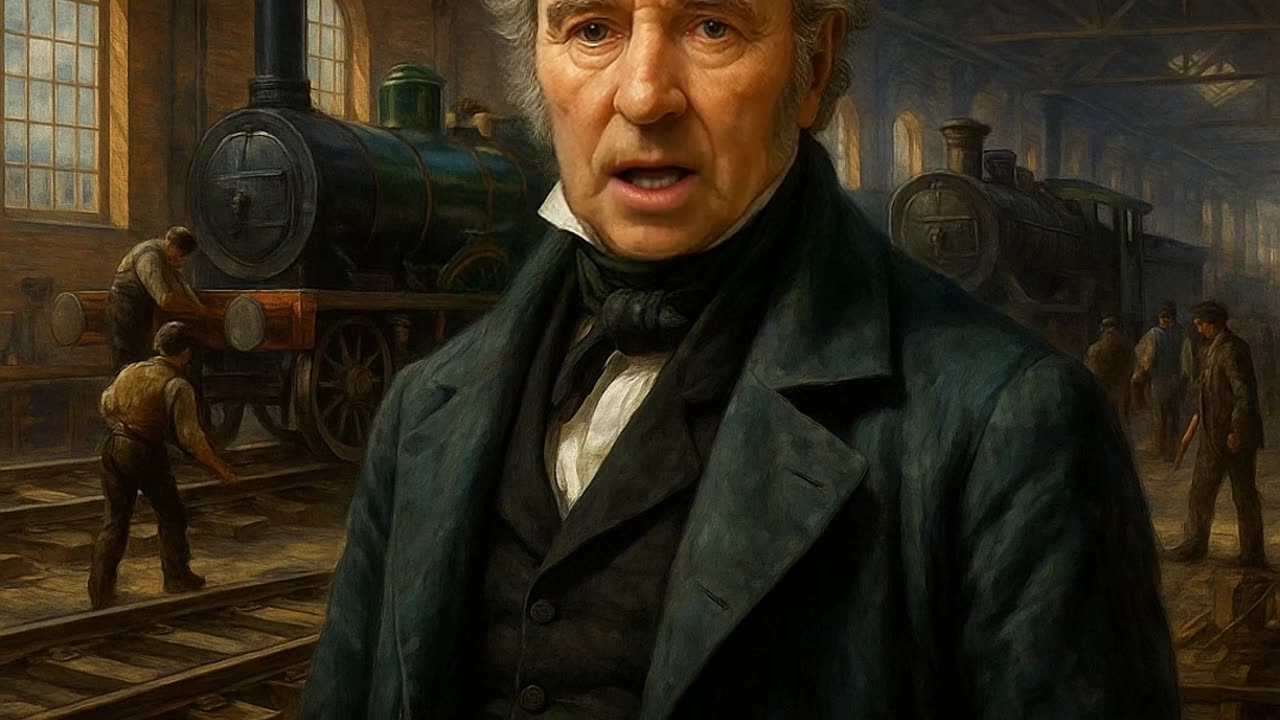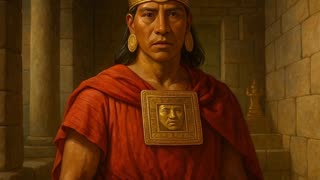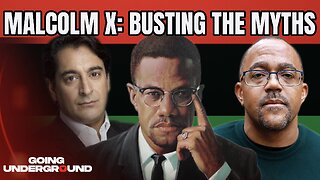Premium Only Content

George Stephenson Tells his Story Growing Up Poor but Changing the World Forever through Steam Engin
Presented to you by: http://www.HistoricalConquest.com
Read more on our blog at: https://www.historicalconquest.com/blog
If you’d met me as a boy in Northumberland, England, you probably wouldn’t have guessed I’d grow up to build machines that changed the world. I was born in 1781 in a coal-mining village called Wylam. My family was poor. My father worked as a fireman—not the kind who puts out fires, but the kind who shoveled coal into the engine of a pumping machine at the mine. We lived in a tiny cottage with barely enough room to turn around in. I didn’t go to school as a child. There just wasn’t time or money for it. But I was always curious about how things worked.
When I was a teenager, I got a job helping around the mines—leading horses, picking coal, cleaning engines. I watched the steam engines closely. I studied how the parts moved, how the pressure built up, how the wheels turned. I couldn’t read or write yet, but I understood machines. I saved up my wages and paid for night school, learning to read, write, and do math when I was already a grown man. That’s how badly I wanted to learn.
I became an engine-wright, which meant I fixed and maintained the steam engines in the mines. It wasn’t glamorous, but I was good at it. And soon, I began to wonder: What if we could put a steam engine on wheels? What if it didn’t just pump water, but pulled coal wagons along tracks? People had tried before, but their machines were heavy, clumsy, and unreliable. I believed I could do better.
In 1814, I built my first steam locomotive. I called it Blücher. It could haul heavy loads of coal over iron rails—slowly, but steadily. That was just the beginning. I kept improving the design, making the engines lighter, more powerful, more efficient. But building engines wasn’t enough. I needed railways—real railways—to run them on. So I started designing those, too. I helped plan and construct the Stockton and Darlington Railway, the first public railway to use steam locomotives. And then came the Liverpool and Manchester Railway—one of the most important projects of my life.
To prove our locomotives were the best choice for the Liverpool and Manchester line, my son Robert and I built the Rocket. It was fast—faster than anything people had seen before. During the Rainhill Trials in 1829, it left the other engines in the dust, reaching speeds over 25 miles per hour. That may not sound like much to you, but back then, it was shocking. People thought it was dangerous to move that fast. They said it would make your organs shake loose or melt your eyes. But we proved them wrong. Rocket won, and steam locomotion became the future.
From there, railways spread across Britain and beyond. They connected cities, sped up trade, carried people farther than they’d ever gone. Everything changed—jobs, markets, timekeeping. I didn’t do it for fame. I just wanted to solve problems. I wanted to make life easier for working people like the ones I grew up with. I was proud of every engine we built, every railway we laid.
I wasn’t born into privilege. I didn’t have a fancy education. But I worked hard. I asked questions. I built things with my hands and with my mind. And I never stopped learning.
So if there’s anything I’d like you to remember, it’s this: your beginnings don’t define your end. You don’t have to be born into opportunity—you can build it. I started out cleaning coal dust off machines. I ended up building the engines that carried the world into the modern age. And if I could do that, then just imagine what you can do.
#GeorgeStephenson
#FatherOfRailways
#SteamRevolution
#RocketLocomotive
#RailwayPioneer
#IndustrialRevolution
#HistoryTok
#HistoryReels
#MuseumMoment
#EngineeringLegends
#SteamPower
#BritishInnovation
#RailHistory
#VictorianEngineering
#TransportRevolution
#IronRoads
#HeritageEducation
#InnovationHistory
#HistoricMachines
#SocialImpactHistory
-
 0:59
0:59
The Historical Conquest Channel
2 days agoAtahualpa Tells HIs Story of Starting a Civil War to Take the Incan Kingdom Before the Spain Arrived
181 -
 2:47:25
2:47:25
BlackDiamondGunsandGear
10 hours agoAfter Hours Armory / RIP Charlie Kirk / What we know
49.5K8 -
 29:09
29:09
Afshin Rattansi's Going Underground
1 day agoThe Political Life of Malcolm X: Busting the Myths (Prof. Kehinde Andrews)
57K16 -
 2:47:25
2:47:25
DLDAfterDark
10 hours ago $7.02 earnedThe Assassination of Charlie Kirk - Just What We KNOW
35.4K8 -
 1:33:56
1:33:56
MattMorseTV
11 hours ago $41.47 earned🔴Exposing his PARTNER IN CRIME.🔴
88.8K294 -
 1:26:51
1:26:51
vivafrei
15 hours agoCharlie Kirk Assassination - When Peaceful Discussion Becomes Impossible - With Jose Vege
109K263 -
 2:04:12
2:04:12
Mally_Mouse
1 day ago🌶️ 🥵Spicy BITE Saturday!! 🥵🌶️- Let's Play: Supermarket Together
54.3K4 -
 1:15:37
1:15:37
BooniesHQ
15 hours ago $7.56 earnedGame Of SKATE Donny Hixson Vs. Chris Massie: Boonies Skate Night 2
70.5K8 -
 2:56:25
2:56:25
Barry Cunningham
16 hours agoTHE TAKING OF CHARLIE KIRK HAS IGNITED A FLAME! AND A BREAKING (BUT NOT SHOCKING) UPDATE!
121K127 -
 9:38
9:38
Exploring With Nug
19 hours ago $3.91 earnedSearching Florida Waters for a Missing Murder Victim’s Car | Alligator Encounter!
47.4K1